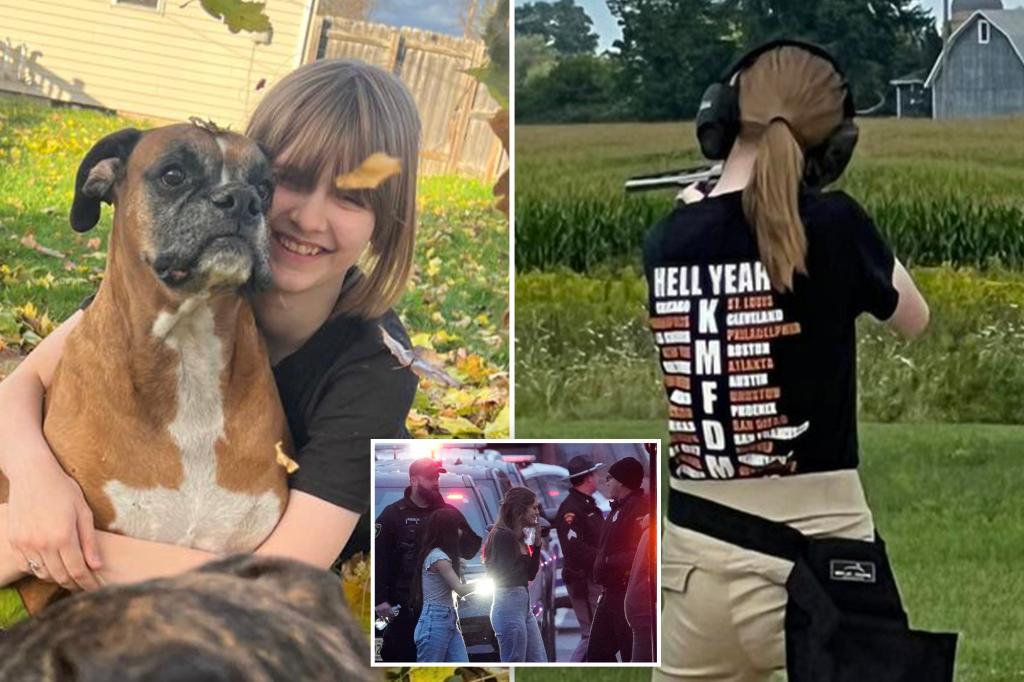The tragic shooting at Abundant Life Christian School in Madison, Wisconsin, has left a community reeling and searching for answers. A seemingly ordinary Tuesday morning transformed into a scene of unimaginable horror when 15-year-old Natalie Rupnow opened fire inside the K-12 school, killing a substitute teacher and a fellow student, and wounding six others. The incident, punctuated by the shooter’s subsequent suicide, has cast a long shadow of grief and bewilderment over the small community. The details that have emerged paint a picture of a troubled teenager, grappling with internal struggles that ultimately manifested in an act of devastating violence.
Natalie Rupnow, known to some as Samantha or Sam, was described by classmates and parents as a solitary figure. She maintained a distinctive style, often seen in a collared shirt, tie, jeans, and combat boots – an “odd version of preppie,” as one parent put it. This attire, coupled with her reserved demeanor and limited social interactions, set her apart from the mainstream student body. Rupnow’s social isolation seemed to be a defining characteristic. She reportedly did not have many friends and spent much of her time alone, a pattern that likely contributed to her emotional struggles. Her habit of consuming copious amounts of energy drinks further hinted at a possible underlying restlessness or anxiety.
The young shooter’s home life also appeared to be troubled, adding another layer of complexity to her already fragile emotional state. Although the specific details remain undisclosed, the available information suggests that Rupnow was grappling with personal difficulties at home. She confided in some about her online relationship with a boyfriend she claimed lived in Germany, perhaps seeking solace and connection in the virtual world in the absence of strong real-world relationships. This digital connection, while offering a sense of belonging, may have further isolated her from her immediate surroundings and contributed to a growing disconnect from her community.
The tragedy unfolded in a study hall, a space typically reserved for quiet reflection and academic pursuits. The substitute teacher, tragically killed in the shooting, was filling in for a regular teacher who was on vacation. This seemingly random act of violence deprived a dedicated educator of their life and robbed a classroom of its sense of security. The teacher’s selfless act of protecting her students underscores the profound impact this incident has had on the entire school community. Her courage in the face of danger stands as a testament to the dedication and compassion of educators everywhere.
The ripple effects of Rupnow’s actions extend far beyond the classroom. Two of the injured students remain in critical condition, fighting for their lives, while others grapple with the physical and emotional trauma of the event. The entire school community, including students, staff, parents, and the wider Madison area, is struggling to come to terms with the senseless violence. The incident has ignited a conversation about the importance of mental health awareness and the need for early intervention, especially among young people.
The search for answers continues as investigators piece together the events leading up to the shooting. Why did Natalie Rupnow choose this path? What were the underlying factors that drove her to such extreme measures? While these questions may never have definitive answers, the ongoing investigation aims to provide some clarity and potentially prevent similar tragedies from occurring in the future. Understanding the complex interplay of personal circumstances, mental health struggles, and societal influences that may have contributed to Rupnow’s actions is crucial in addressing the root causes of youth violence.
This tragedy serves as a stark reminder of the fragility of life and the importance of fostering a supportive and inclusive environment for young people. Early identification and intervention for students experiencing emotional distress are crucial. Building strong connections within schools and communities can create a safety net that catches those who are struggling before they resort to desperate measures. The road to healing will be long and arduous for the Abundant Life Christian School community, but the outpouring of support and the collective commitment to learning from this devastating event offer a glimmer of hope amidst the darkness.

